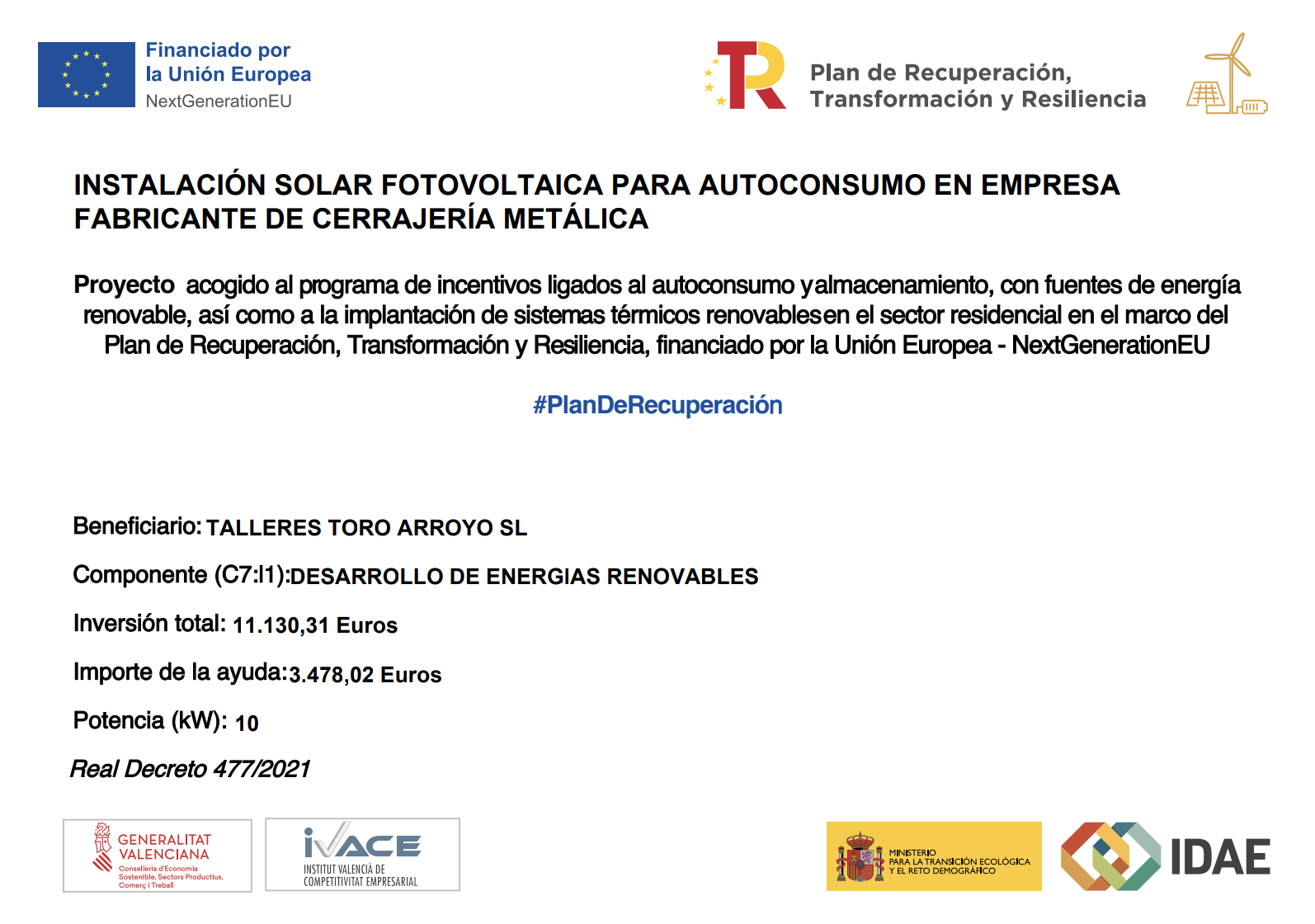Talleres Toro inició su andadura a principios del año 2003, con la ilusión de formar una empresa dedicada a la fabricación de cerrajería y de todo tipo de puertas, montaje de estructuras metálicas y automatismos.
En el año 2008, para ofrecer mejor servicio, inaugura sus nuevas instalaciones en el P.I. La Marjal II, una nave con 850 m2 de superficie con puente grúa y nueva maquinaria.
Como novedad, en el 2016 hemos ampliado nuestro abanico de serviciosy contamos con un centro de mecanizado para atender la demanda de fabricación de piezas metálicas a medida.
Desde el inicio de nuestra actividad, hemos crecido poco a poco para crear una empresa sólida, gracias a nuestros clientes.
Nuestro objetivo, trabajar en contínuo desarrollo para conseguir ser un referente en nuestro sector.

